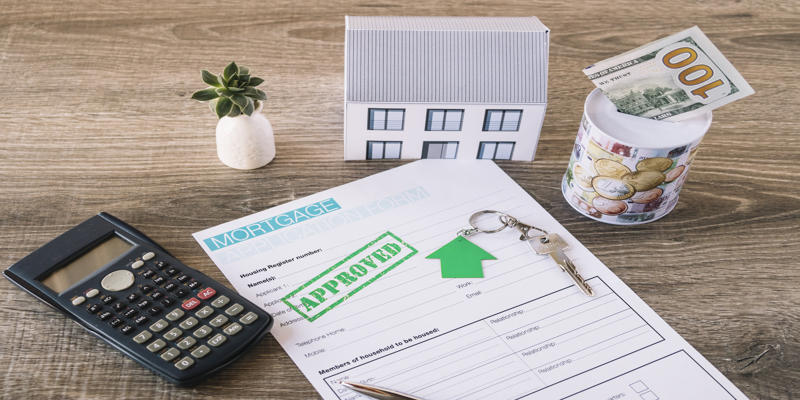A Simple Guide to the First-Time Home Buyer Tax Credit
Buying your first home is an exciting step, but it can also feel overwhelming with all the costs and paperwork involved. For many first-time buyers, the First-Time Home Buyer Tax Credit has been a game-changer, offering financial relief and making homeownership more accessible.

While this tax credit has undergone changes over the years, it remains a crucial topic for anyone planning to purchase their first home. Lets explore what this credit is, how it works, and why it matters for those stepping into homeownership for the first time.
What Is the First-Time Home Buyer Tax Credit?
The First-Time Home Buyer Tax Credit is a government scheme designed to make buying a home easier for a first time buyer. It was originally introduced in 2008 when the housing crisis hit and allowed eligible buyers a refundable credit. While the original version of the program ended in 2010, there has been recent discussion and proposals to bring it back, and with it, the potential to provide similar benefits to a new generation of buyers.

The benefit of this tax credit is that it gives actual money back to you. A tax credit is different from deduction, which reduces taxable income, because a tax credit cuts down the amount of tax owed. This means huge savings for first time buyers who can eliminate some of the closing costs, down payments, and other expenses that come with buying a home for the first time.
Encouraging homeownership is the main goal of the program since this is advantageous to both individual home owners and to the community and to the local economy. For those who might not be able to afford the dream of home ownership, it's a stepping stone.
How Does It Work?
Understanding how the First-Time Home Buyer Tax Credit works is essential for maximizing its benefits. While the specifics can vary depending on the program's iteration, the basic principle remains the same: eligible buyers receive a financial credit after purchasing their first home. If the tax credit is refundable, it means you can receive a refund even if your total tax liability is lower than the credit amount.
Eligibility criteria are an essential aspect of the program. Typically, buyers must not have owned a home in the past three years to qualify as "first-time buyers." Income limits may also apply, ensuring the program targets individuals and families who need financial assistance the most. Additionally, the home being purchased must often be a primary residence, not a second home or investment property.
For example, if a $10,000 tax credit is available and your total tax liability is $8,000, you would receive the remaining $2,000 as a refund. In some cases, the credit might be phased out for higher-income earners or limited to specific purchase prices to prevent misuse.
Although the original tax credit expired, proposals to revive it suggest it could provide up to $15,000 for eligible buyers. Keeping up with legislative updates is crucial for anyone considering applying, as the programs details can significantly impact the homebuying experience.
Why It Matters for First-Time Buyers?
The First-Time Home Buyer Tax Credit is more than just a financial perk; its a pathway to greater stability and wealth-building. Homeownership remains a cornerstone of the American dream, offering long-term benefits such as equity building and financial security. However, the upfront costs often deter many potential buyers. This tax credit eases that barrier, allowing individuals and families to step into homeownership with less stress.
The credit also has broader implications. It can stimulate the housing market, which in turn boosts local economies by creating jobs and increasing demand for goods and services. When first-time buyers enter the market, they often contribute to a chain reactionselling homes, hiring contractors for renovations, and purchasing furniture and appliances.

For many, the psychological benefits of owning a home are just as important as the financial ones. A home provides a sense of belonging and a foundation for future generations. By reducing the initial cost hurdles, the tax credit helps more people achieve this milestone.
Its also worth noting that the credit can be especially impactful in areas where housing affordability is a significant challenge. Rising home prices in many cities make it harder for first-time buyers to compete. Programs like this level the playing field, giving buyers a chance to secure a home without taking on excessive financial strain.
Navigating the Path to Homeownership with Confidence
The process of buying your first home involves careful planning and budgeting. While the First-Time Home Buyer Tax Credit can be a powerful tool, its essential to approach the homebuying journey with a clear understanding of your financial situation. Before purchasing, review your credit score, savings, and potential loan options. Many lenders offer programs specifically designed for first-time buyers, which can complement the benefits of the tax credit.
Its also advisable to work with a trusted real estate agent and financial advisor. These professionals can guide you through the complexities of the homebuying process, ensuring you make informed decisions. Understanding local housing markets and negotiating effectively are critical skills that can save you money and help you find a home that suits your needs.
For those interested in the tax credit, staying informed about legislative changes is key. Federal and state governments often announce updates to housing programs, which can create new opportunities for buyers. Resources like the IRS website and housing advocacy groups are valuable tools for keeping up-to-date with eligibility requirements and application processes.
Conclusion
The First-Time Home Buyer Tax Credit represents more than just a financial benefit; its a gateway to the life-changing experience of homeownership. For many, it reduces the overwhelming costs of buying a home, paving the way for financial stability and personal growth. Its potential reintroduction could reignite opportunities for a new wave of buyers, fostering stronger communities and more secure futures.












